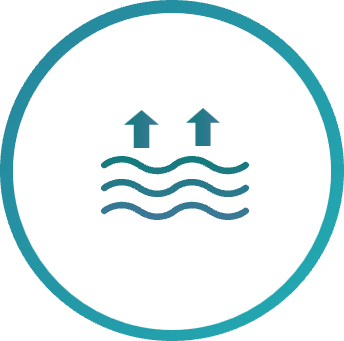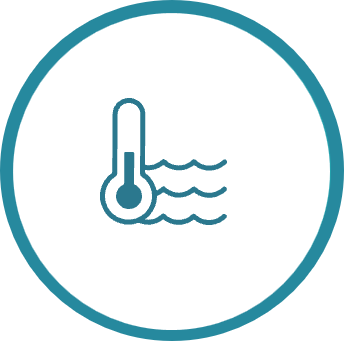16.4 Critical statistical infrastructure protection#
The production of official statistics is a complex chain of operations. An NSO requires the same critical statistical infrastructure to fulfil its core functions irrespective of its size or capacity. This infrastructure comprises physical space where the NSO is hosted; trained NSO staff with expertise and institutional knowledge; IT infrastructure necessary to manage its computer systems, data maintained by the NSO; and software systems used to store and process the NSO’s data. Therefore, an NSO must take necessary measures to ensure the production of statistics can be maintained in the event of any disastrous situation.
16.4.1 The COVID-19 pandemic#
The COVID-19 pandemic has created a previously unencountered set of problems. NSOs have tried to organize statistical production in conditions where businesses are less inclined to provide data, where physical contact with respondents is to be avoided to prevent spreading the infection and where remote work is putting huge pressure on IT infrastructure which is a particular problem in developing countries.
Other issues have arisen during the quarantine such as bandwidth, connection security and remote access, how to organize communication between various parts of the organization, how to ensure attendance of skeleton workforce in the absence of public transport, how to improve motivation for remote work, how to organize childcare and other new challenges.
UN COVID-19 Data Hub (🔗). This United Nations Department of Economic and Social Affairs resource makes data relevant to COVID-19 response readily available as geospatial data web services, suitable for the production of maps and other data visualizations and analyses, and easy to download in multiple formats.
Impact of the COVID-19 pandemic on the 2020 census (🔗). The United Nations Statistics Division website provides an overview of the pandemic’s consequences in census-taking in the year 2020.
Official Statistics in the context of the COVID-19 crisis (🔗). This website focuses on the role that official statistics will have to play in the phase of world-wide recovery from the pandemic and the rapid investments and actions needed to properly fulfil this role.
UNECE launches a platform(🔗) to help National Statistical Offices navigate challenges for official statistics during COVID-19 crisis.
UNECA African System Collaboration Platform (🔗) enables teams across the continent to engage with each other and share best practices, methodologies, and guidelines during the COVID-19 crisis and beyond. The platform is designed to be a community of practice to discuss the contemporary issues faced by national statistics organizations.
16.4.2 Climate change#
Climate change brings its own set of risks. The Intergovernmental Panel on Climate Change (IPCC) summary for policymakers (🔗) lists the following consequences:
Sea-level rise (SLR) SLR is projected to be directly related to the degree of global warming and proximity to the equator. SLR estimates range from 50cm with 1°C global warming up to 1m with 4°C global warming by the 2050s depending on carbon emissions. SLR raises the risk of storm surges, tropical cyclones, and tsunamis, as well as persistent flooding and coastal erosion.
Extreme temperatures Global warming is projected to result in more frequent and more intense episodes of extreme heat. While the marginal impact is projected to be smaller for countries closer to the equator, this comes on top of already high average temperatures for small states in the Caribbean, Pacific, and Africa.
Geotectonic phenomena Countries, especially those within the Pacific Ring of Fire, shall mitigate the impact brought about by disasters such as volcanic eruptions, earthquakes, tsunami and other related geotectonic phenomena.
Particular vulnerability of small island developing states
This risk of such events applies particularly to NSOs in countries more vulnerable to natural disasters and the consequences of climate change, particularly for small island developing states (SIDS). As noted in the IMF policy paper on small states’ resilience to natural disasters and climate change (🔗), many small island states are highly vulnerable to storm damage. Some face a difficult future due to sea-level rise. Projections of climate parameters by IPCC and Maple croft’s 2016 climate change vulnerability index suggest that countries closer to the equator and low-lying coastal countries (including many small states) are extremely or highly vulnerable to climate change. Roughly three-quarters of low-income countries and one-third of small developing states are assessed as extremely or highly vulnerable to climate change, compared to one-quarter of the rest of the world.
What steps should an NSO take?
Any steps an NSO takes to allay the risks of such natural disasters would normally be part of a wider government disaster recovery programme. It could be argued that official statistics are part of the critical national infrastructure; as such, should be under special protection and covered by appropriate regulations and protocols for disaster recovery and backup and contingency plans to restore a basic setup after any disaster. However, a thorough risk analysis should be carried out by NSOs to identify and quantify the major disaster or climate change risks, their likelihood of realisation, potential impacts, and key vulnerabilities (infrastructures at risk, vulnerable communities and populations).
This risk analysis should also identify what actions should be taken to mitigate them in the event of a natural disaster. (see Chapter 6.7 — Risk management). Logically an NSO should focus on dealing with risks particular to the NSO itself - examples being large scale server failure, fire in the building and flooding. Actions to mitigate these risks should cover data backup policies, disaster drills and evacuation planning.
Of course, it is one thing to list what actions should be taken and quite another to finance and implement them as they can be very costly and are dependent on appropriate funding outside of the regular operational budget. PARIS21 SIDS – NSDS guidelines (🔗) suggest that small states should integrate risk reduction and disaster response programs into their core budget and debt management frameworks.
As noted in the PARIS21 report ‘Advancing statistical development in small island developing states in the post-2015 era’ (🔗) there is a need for proper backup in situations when national systems fail, political and security conditions deteriorate, data is lost or unavailable, and/or when personnel are unavailable or have been replaced or transferred. Resources to upgrade much-needed ICT infrastructure (e.g., computers, databases, software) to support statistical work in NSS is beyond the means of several SIDS. This is a serious obstacle to daily statistics work which also hampers communication with data users. NSOs rely on donor support in most cases as part of statistics projects (i.e., census or survey operation) to upgrade their computers and buy new software.
Regional bodies provide support in terms of identification and provision of adapted equipment for use by NSS. In some instances, regional data processing facility is established using pooled resources from country contributions to aid NSS in data processing, analysis, and statistical information storage. The importance of the NSO in providing data during and after a natural disaster should also be taken into consideration. As noted in the UNECE report ‘Recommendations on the Role of Official Statistics in Measuring Hazardous Events and Disasters’ (🔗), in many countries, the national statistical system’s roles in disaster risk management and monitoring of hazardous events and disasters are not clear. The information needs for dealing with hazardous events and disasters are complex and involve many different agencies. Official statistics can meet some needs, but others require different types of information that cannot be provided by the national statistical system. Therefore, clarifying its roles in providing information related to hazardous events and disasters regarding institutional cooperation, integration of statistical and geographical information, and statistical confidentiality, among other issues, is important.
16.4.3 Examples#
Statistics Mauritius
Statistics Mauritius has an established data backup system (🔗) of its statistical data as well as business data and website. The frequency of the backup is determined by the level of criticality of the data. Core databases such as labour, prices, trade and demographic statistics are backed up daily. The central source code repository for all core applications is backed up twice weekly. Shared network data files for dedicated units are backed up weekly.
St. Vincent and the Grenadines
Adoption of the World Bank Caribbean Digital Transformation (🔗) program to improve: capacity, storage and resilience.
Suriname
Back up methods to deal with possible disasters: The NSO of Suriname (ABS/GBS-Suriname) utilizes different options to back up (🔗) its data.



